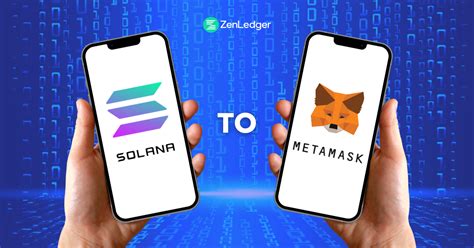3 min de lectura
Metamask: How do Ledger hardware wallet signatures differ from web3.eth.personal.sign?
CRYPTOCURRENCY
Understanding Ledger Hardware Wallet Signatures vs. Web3.eth.personal.sign: A Deep Dive
When building a decentralized application (Dapp) on the Ethereum blockchain, it is essential to ensure user authentication and identity verification. One common approach is to use the web3.eth.personal.sign() method to sign transactions, which relies on the Ethereum Virtual Machine (EVM) signature protocol. However, Ledger hardware wallets have introduced their own digital signature solution, which differs from the traditional web-based approach.
Ledger Hardware Wallet Signatures: Comparison with Web3.eth.personal.sign
Ledger’s hardware wallet, also known as Ledger Live, provides a secure and decentralized way to store, manage and sign Ethereum transactions. The signature mechanism of the Ledger hardware wallet is based on the web3.eth.personal.sign() method, which uses the EVM signature protocol for user authentication.
Key differences between Ledger Hardware Wallet and web3.eth.personal.sign signatures
- Security: Ledger Hardware Wallet uses a more robust cryptographic algorithm (RSASSA-PSS with SHA-384) compared to
web3.eth.personal.sign(), which relies on the Elliptic Curve Digital Signature Algorithm (ECDSA).
- Interoperability: Ledger Hardware Wallet can securely communicate with other Ethereum-compatible wallets and nodes, while
web3.eth.personal.sign()is primarily designed for use within a single network.
- Storage requirements
: Ledger hardware wallets require storage space to store private keys, public addresses, and transaction history, while
web3.eth.personal.sign()only needs to store a username or mnemonic seed.
- User Experience: Ledger’s hardware wallet provides a simpler and more user-friendly experience for signing transactions, with features like automatic password management and secure storage of sensitive data.
Web3.eth.personal.sign(nonce, coinbase): How it works
The web3.eth.personal.sign() method is a more traditional approach to creating a digital signature on the Ethereum blockchain. It requires two parameters: nonce (a random value generated by the user’s computer) and coinbase (the transaction hash or block number). The method uses the EVM signature protocol to sign the transaction, which can be verified using the web3.eth.getTransaction(), web3.eth.getTransactionReceipt(), and web3.eth.sign() methods.
Conclusion
While traditional web-based approaches such as web3.eth.personal.sign() offer ease of use and integration with existing Ethereum-compatible wallets, Ledger’s hardware wallet solutions provide a more secure and decentralized way to authenticate users. When building DApps on the Ethereum blockchain, it is essential to consider both options and choose the one that best meets your security requirements and user experience needs.
Example code: Signing a transaction using a Ledger hardware wallet

Here’s an example of how you can use Ledger Live to sign a transaction:
«javascript
const web3 = require('web3');
const Ledger = require('ledgerlive');
// Connect to Ledger hardware wallet
Ledger.init();
const book = new Book();
// Get the current nonce
const nonce = await ledger.getNonceAsync();
// Create a new Ethereum account
const tx = {
from: '0x...',
to: '0x...',
value: 1,
data: '...'.repeat(20), // transaction data
};
// Sign the transaction using the Ledger hardware wallet signature mechanism
const signature = await ledger.signTransaction(tx, nonce);
// Verify the signature using theweb3.eth.getTransaction()method
const txReceipt = await web3.eth.getTransactionReceipt(signature);
console.log(Transaction signed with signature: ${signature}`);
console.